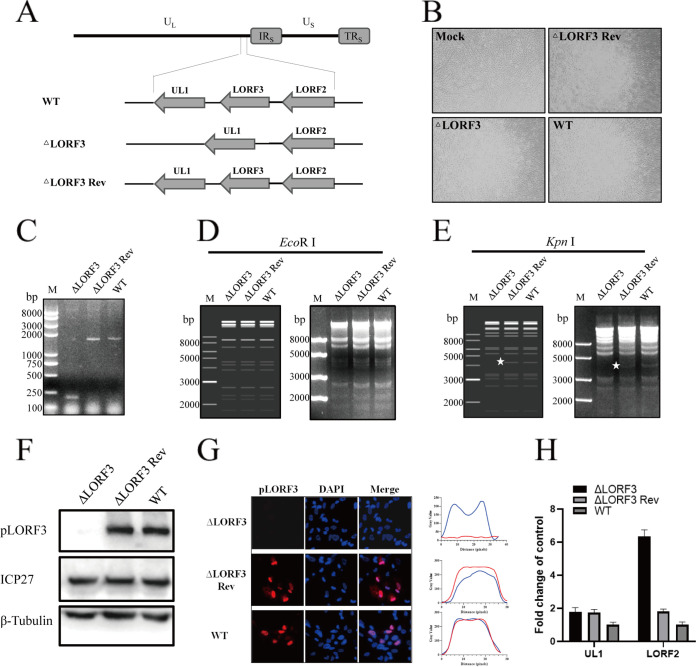FIG 4.
Construction and identification of recombinant viruses. (A) Focus on the LORF3 region is shown with the positive surrounding genes for LORF2. The LORF3 full-length fragment was deleted in the overall frame. (B) BAC-free LORF3 deletion mutants (ΔLORF3), reversion mutants (ΔLORF3 Rev), and parental strains (WT) were harvested after rescue and purification. (C) Identification of recombinant viruses by PCR analysis. (D) RFLP analysis. Infectious cloned plasmids were treated with QuickCut EcoRI and imaged by 1% gel electrophoresis, and no visible differences were found. (E) RFLP analysis. Infectious cloned plasmids were treated with QuickCut KpnI and imaged by 1% gel electrophoresis, and the deletion strain lacks a band of about 4 kb (the place indicated by the asterisk). (F) Western blot analysis of LORF3 protein expression. Recombinant virus-infected cell lysates were subjected to Western blotting, and protein expression was detected using an anti-LORF3 polyclonal antibody. β-Tubulin was used as a control. (G) Detection of pLORF3 in virus-infected cells by IFA. DEF infected with indicated viruses were fixed at 24 hpi and then stained with a rabbit anti-LORF3 polyclonal antibody (red), and nuclei were visualized using DAPI (blue) (scale bar, 10 μm). (H) Effects of LORF3 deletion on peripheral gene expression.

